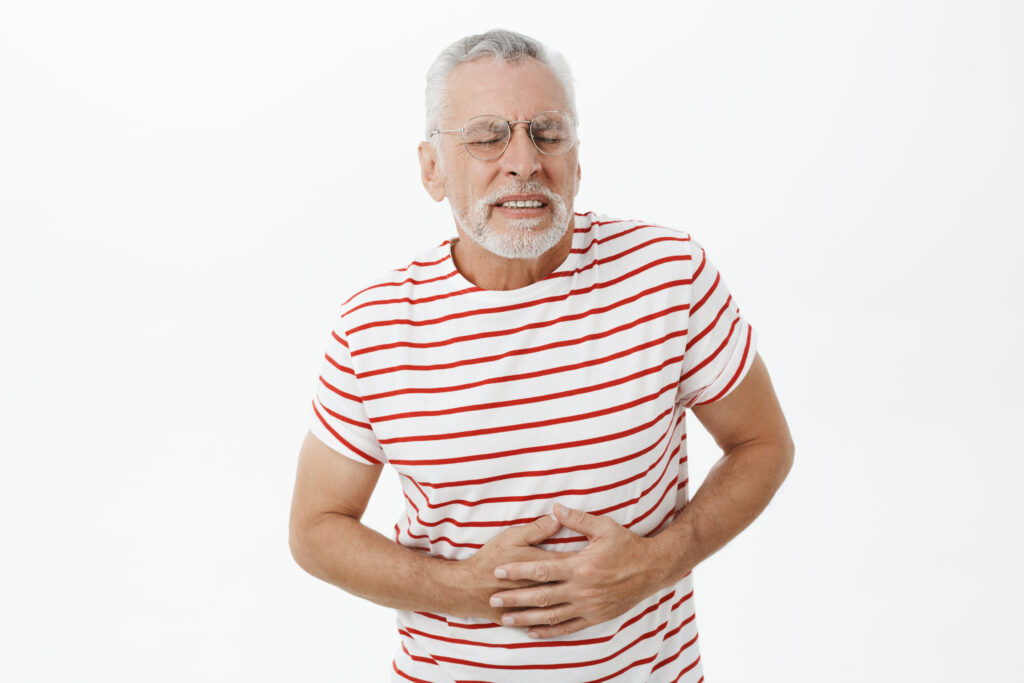Hard deposits made of minerals and salts form inside the kidneys and can be found in any part of your urinary tract from the kidneys to the bladder. Often renal stones are found when urine gets concentrated allowing minerals to get crystallized and stick together.
Types of Stones
- Calcium stones consisting of Calcium oxalate or Calcium phosphate – Certain fruits and vegetables, as well as nuts and chocolate, in diet, high doses of vitamin D, intestinal bypass surgery, and several metabolic disorders can predispose the formation of these stones.
- Uric acid stones – They occur mainly due to dehydration which can be caused by chronic diarrhea or malabsorption, due to diabetes mellitus, increased protein intake, and metabolic disorders.
- Cystine stones– It is made of a type of amino acid called cysteine, which occurs due to a hereditary disorder that causes excessive excretion of cysteine through urine.
Identification of the type of stone is important to suspect the cause of stone formation. Reducing the cause of stone formation can avoid the recurrent formation of stones.

Causes
- Can be idiopathic
- Prolonged immobilization
- Dietary excess of spinach, tea, cocoa, chocolate, and pepper as they increase the amount of oxalate.
- Certain infections
- Obstruction to the flow of urine and stasis of urine
- Some drugs specially used to treat Depression and Migraine
Risk Factors
- A relative of yours carries a history of having developed renal stones.
- Obesity, high BMI, and large waist circumference.
- Digestive diseases such as Inflammatory bowel disease and surgeries such as gastric bypass.
- Not drinking an adequate amount of water each day.
- Males are at more risk.
- Age between 30 to 50 years shows a high incidence of cases.
Clinical Features of Renal Stones
- Severe pain which radiates from your loin to the groin area of your abdomen.
- This pain can be severe and sharp.
- Pain can be increased during urination and can come intermittently as waves.
- Blood in urine resulting in pink or red color urine.
- Nausea and vomiting.
- Fever if a urinary tract infection is also present.

Diagnosis of Renal Stones
Initially, the patient must be assessed clinically through history and examination. Then it is important to confirm the diagnosis earliest opportunity through a non-contrast CT scan. An x-ray including the kidney ureter and bladder can also be used to diagnose radio-opaque stones.
Management of Renal Stones
Management of these patients can be different depending on the circumstances of the presentation whether an emergency or an elective setting.
Pharmacological Management
- If the CT scan has confirmed the diagnosis of stones and that the stones are smaller than 5mm.
- medical expensive therapy can be used including drugs such as alpha-blockers and calcium channel blockers including Nifedipine.
- Nonsteroid anti-inflammatory drug as Diclofenac sodium can be given.
Non-pharmacological Management
- The patient should be monitored for further episodes of pain, temperature, pulse, blood pressure, and white blood cell count to identify the development of urinary stones.
- Surgical interventions to remove the stones as primary ureteroscopic stone retrievals, cystoscopy, and insertion of a ureteric stent are a few of the procedures.
Life Style Modifications
- Drink adequate water and fluids including at least 2.5 liters per day.
- Reduce high intake of animal proteins during your day including beef, chicken, pork, or eggs.
- Animal proteins can be replaced by plant proteins including legumes, seeds, soya, tofu, and nuts.
- Salt intake must also be reduced in the diet.
- Calcium must be included in the diet through certain vegetables, and leafy greens like spinach, soy, and dairy products.
- BMI must be maintained in the healthy range and an adequate weight must be maintained while reducing extra weight.
References
- Bailey and Love’s Short Practice of Surgery- 27th Edition
- Kumar and Clerk’s Clinical Medicine -8th Edition- Parveen Kumar, Michael Clark
- Oxford Handbook of Clinical Medicine – 10th Edition
- Browse’s Introduction to the Symptoms and Signs of Surgical Disease – 4th Edition – Norman L. Browse, John Black, Kevin G. Burnand and William E.G. Thomas
- Image by wayhomestudio on Freepik
- Image by cookie_studio on Freepik

